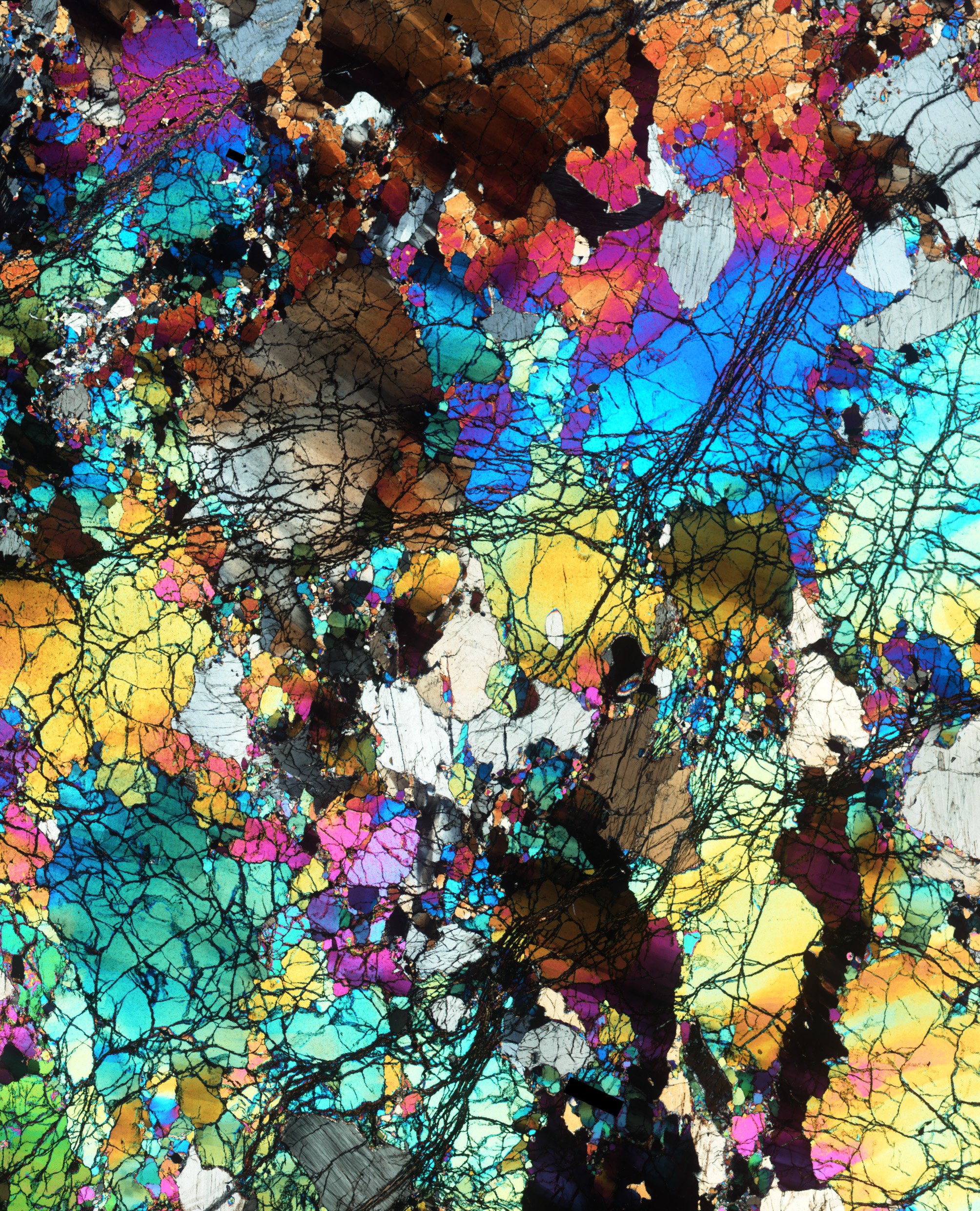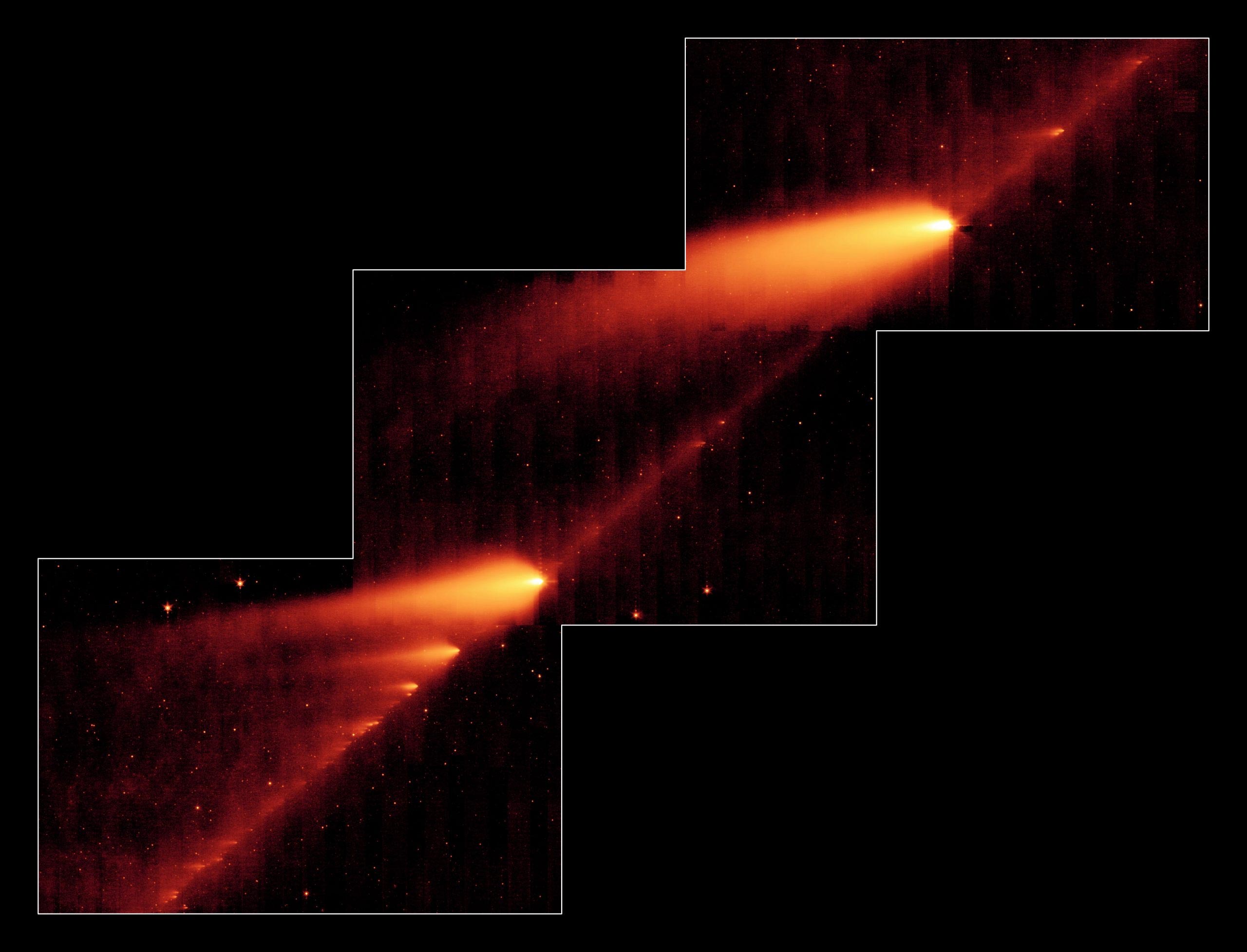
Gambar inframerah dari Teleskop Luar Angkasa Spitzer NASA ini menunjukkan komet retak 73P/Schwassman-Wachmann 3 yang memuntahkan sisa puing selama beberapa penerbangan mengelilingi matahari. Benda yang menyerupai api adalah bagian dan ekor komet, sedangkan lintasan komet yang berdebu adalah garis yang menghubungkan bagian-bagian tersebut. kredit: NASA
Para astronom sangat antusias dengan kemungkinan hujan meteor baru pada 30-31 Mei, hujan tau Hercules diperkirakan akan mencapai puncaknya pada malam 30 Mei dan dini hari tanggal 31 Mei.
Pada tahun 1930, pengamat Jerman Arnold Schwassmann dan Arno Arthur Wachmann menemukan sebuah komet yang dikenal sebagai 73P/Schwassmann-Wachmann, atau “SW3,” yang mengorbit Matahari setiap 5,4 tahun. Karena sangat redup, SW3 tidak terlihat lagi hingga akhir 1970-an, tampak sangat normal hingga 1995, ketika para astronom menyadari bahwa komet telah menjadi sekitar 600 kali lebih terang dan berubah dari noda samar menjadi terlihat dengan mata telanjang saat melintas. . Setelah penyelidikan lebih lanjut, para astronom menyadari bahwa SW3 telah pecah menjadi beberapa bagian, menyebarkan puing-puing di jalur orbitnya. Pada saat kami kembali pada tahun 2006, itu kira-kira 70 buah, dan terus pecah lebih jauh sejak itu.
Jika mencapai kita tahun ini, puing-puing SW3 akan menghantam atmosfer Bumi dengan sangat lambat, bergerak dengan kecepatan 10 mil per detik – yang berarti meteorit jauh lebih ringan daripada meteorit milik eta Aquariids. Tapi pengamat bintang di Amerika Utara mengambil perhatian khusus tahun ini karena radiasi tau Hercules akan tinggi di langit malam pada waktu puncak yang diharapkan. Lebih baik lagi, bulan masih baru, jadi tidak akan ada cahaya bulan untuk menyapu meteor yang redup.
“Ini akan menjadi peristiwa semua atau tidak sama sekali. Jika puing-puing dari SW3 bergerak lebih dari 220 mil per jam ketika terpisah dari komet, kita mungkin melihat hujan meteor yang bagus,” kata Bill Cook, yang memimpin[{” attribute=””>NASA’s Meteoroid Environment Office at NASA’s Marshall Space Flight Center in Huntsville, Alabama.
All the excitement from astronomers and the public has sparked a lot of information about the tau Herculids. Some has been accurate, and some has not.
We get excited about meteor showers, too! But sometimes events like this don’t live up to expectations – it happened with the 2019 Alpha Monocerotid shower, for example. And some astronomers predict a dazzling display of tau Herculids could be “hit or miss.”
So, we’re encouraging eager skywatchers to channel their inner scientists, and look beyond the headlines. Here are the facts:
- On the night of May 30 into the early morning of May 31, Earth will pass through the debris trails of a broken comet called 73P/Schwassmann-Wachmann, or SW3.
- The comet, which broke into large fragments back in 1995, won’t reach this point in its orbit until August.
- If the fragments from were ejected with speeds greater than twice the normal speeds—fast enough to reach Earth—we might get a meteor shower.
- Spitzer observations published in 2009 indicate that at least some fragments are moving fast enough. This is one reason why astronomers are excited.
- If a meteor shower does occur, the tau Herculids move slowly by meteor standards – they will be faint.
Observers in North America under clear, dark skies have the best chance of seeing a tau Herculid shower. The peak time to watch is around 1 a.m. on the East Coast or 10 p.m. on the West Coast.
We can’t be certain what we’ll see. We can only hope it’s spectacular.

“Gamer yang sangat menawan. Ahli web. Sarjana TV. Pecandu makanan. Ninja media sosial yang rajin. Pelopor musik hardcore.”






More Stories
Sebuah studi baru menantang teori oksidasi mantel
Generasi Milenial dan Generasi X menghadapi risiko lebih tinggi terkena 17 jenis kanker ini dibandingkan generasi baby boomer: ScienceAlert
Sebuah pencapaian penting bagi NASA dalam menemukan exoplanet